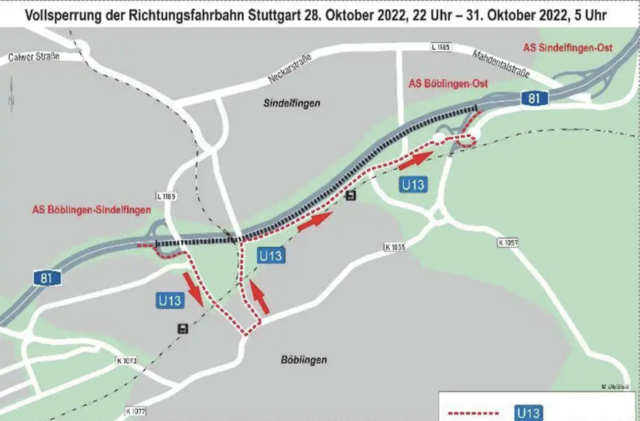
Host Nation Update, Oct. 19, 2022
Happy 100th birthday, Hauptbahnhof (central station)!
The Golden Twenties continue to shape Stuttgart architecturally to this day. On the morning of October 22, 1922 – it is a Sunday – citizens flock to witness a great event. For years, they had been able to witness the progress of a prominent construction site, past which trains still ran into the old Central Station not far from the New Palace. Now, finally, tracks 9 to 16 will be opened along with the south wing. This is also the starting signal for the dismantling of the old track system up to today’s Bolzstrasse. In May 1925, tracks 5 to 8 go into operation, and in December, tracks 1 to 4. Paul Bonatz was 33 years old when, in 1910, he and his colleague Eugen Scholer beat 70 competitors in an architectural competition organized by the Royal Württemberg State Railways. He calls his design for Stuttgart’s main train station “Umbilicus Sueviae,” the “navel of Swabia.” His clients reject their plan to build a through station with extensive tunnels – because 95 percent of travelers say Stuttgart is their destination. Therefore, plans for a terminus station win out, to disappear over 100 years later. In the 1920s, a kiosk stands in front of the later-built north wing of the main station. Around it, the first cabs park in a semicircle. Most of them are converted horse-drawn taxis. “With relatively weak engines, the carriages drove through the city,” writes the Schwäbische Merkur.
Some think that these were the good old days. At that time, no rift went through the city. No one knew anything about Stuttgart 21. The train station is a place of farewell and welcome, a place of hustle and bustle and longing. Deep in the ‘cauldron,’ it has long since also become a place of protest. (Stuttgarter Nachrichten, Oct 19)
Between Böblingen and Sindelfingen – A 81 toward Stuttgart closed from October 28 to October 31
Construction work for the widening of the A 81 between the Sindelfingen-Ost and Böblingen-Hulb junctions is in full swing. Major measures that affect traffic – sometimes more, sometimes less – are scheduled on a regular basis, including the last weekend in October. Then, for the construction of the noise protection cover, the traffic in the direction of Stuttgart in this area will be shifted to a replacement lane south of the Autobahn route. According to the responsible project company Deges, two lanes in this direction will continue to be provided during this time, as well as an emergency lay-by and temporary noise barriers. In order to set up the replacement route, a full closure of the A 81 in the direction of Stuttgart between Böblingen-Sindelfingen and Böblingen-Ost will therefore be necessary from October 28 to 31. The A 81 will remain open in the direction of Singen, where there will be no traffic restrictions. The full closure will begin at 10 p.m. on Friday, October 28 and is expected to end at around 5 a.m. on Monday, October 31. The necessary detours are signposted. In the direction of Singen, the transfer of freeway traffic to the bypass route during construction is planned for spring 2023. In the meantime, construction preparations for the tunnel construction and the completion of the temporary roadway in the direction of Singen are taking place in the area required for this. In addition, work has begun on a new bridge in the Sindelfinger Strasse area near the Smart site with the construction of an excavation pit shoring. This structure is expected to be completed by the end of 2023. (Stgt Nachrichten, Oct 17)

Pilots’ strike at Eurowings
The airline has canceled half of its flights, which amounted to several hundred across Germany. At Stuttgart Airport, 48 flights were canceled, including the flight to Berlin-Brandenburg at 4:05 p.m. on Monday and the connection to London at 5:15 p.m.. Instead of the flight actually booked, the airline was able to offer some passengers to fly as early as Sunday evening, but many went empty-handed. With the strike, the Cockpit (VG) union wants to enforce longer rest periods and shorter assignments for pilots; the management considers the demands excessive and fears damages in the range of a two-digit million euro sum. On October 6, the VG had already called for a strike, and at that time, too, about half of all flights had to be canceled. Most customers had prepared themselves for the cancellations early on, which is why there was a yawning void at Terminal 1 of the airport on Monday afternoon, where the counters of the airline, which specializes in short and medium-haul flights, are located. (Stgt Nachrichten, Oct 18)
Energy crisis in Baden-Württemberg
Even though the state is in the midst of an energy crisis, Minister President Winfried Kretschmann sees no reason to worry about power outages. “The population doesn’t need to fear a blackout,” the Green politician said in Stuttgart on Tuesday.
In view of the German government’s agreement to continue operating Germany’s three remaining nuclear power plants, certainly not. “That can be as good as ruled out.” He said he wanted to reassure the population and the economy. “There is really optimal provision that it will not come to that.” The gas storage facilities are filled, he said. Kretschmann stoked confidence that they would get through the winter in good order. (Stgt Nachrichten, Oct 18)
Cannabis legalization discussions underway at federal level
Federal Health Minister Karl Lauterbach (SPD) has presented key points for the planned controlled legalization of cannabis: In the future, the purchase and possession of 20 grams of cannabis from the age of 18 should generally be exempt from punishment. Also, the self-cultivation of up to two cannabis plants is to be permitted. The amount of the intoxicating active substance THC in legalized cannabis is to be a maximum of 15 percent. In order to prevent “cannabis-related brain damage,” however, only products with a THC content of no more than 10 percent may be sold to young people between the ages of 18 and 21, it was further stated. The possession limit of 20 grams of cannabis should apply regardless of the origin of the cannabis product and the THC content. In general, cannabis should no longer be legally classified as a narcotic. If young people under the age of 18 were caught with cannabis, the exemption from punishment would also apply. However, according to the key points, youth welfare offices could oblige young people to take part in prevention courses in such cases. In addition, the cannabis carried would then be confiscated. The locations of cannabis stores are to be regulated: There should be minimum distances to schools, children’s and youth facilities. Despite legalization, it should remain prohibited to advertise cannabis products. According to the cornerstones, it is being considered to allow sales not only in licensed stores, but also in pharmacies. In this way, the black market could be better combated because of the broader supply, especially in rural areas. Just over a month ago, Federal Minister of Finance Christian Lindner (FDP) had held out the prospect of cannabis legalization for next year. However, Federal Drug Commissioner Burkhard Blienert had said as recently as July that it was unlikely that the law on cannabis legalization would come into force before 2024. Lauterbach had said in late June that about four million adults used cannabis. There is a large black market and organized crime in these areas, he said. In addition, he said, impurities could be observed, some of which were added to transfer people from cannabis to other drugs. “Cannabis use in moderation, well secured, quality and without acquisitive crime is something to accept and is part of a modern society.” (Stuttgarter Nachrichten, Oct 19)
COVID-related news
The position of B-W in regards to future COVID developments
The B-W Government remains in a “wait and see” position regarding Corona virus developments. B-W Health Minister Manfred Lucha (Greens) stated last week that he could see are return to mandatory mask wear indoors under certain circumstances. Speaking to journalists yesterday, 18 OCT 22, B-W Minister President Winfried Kretschmann (Greens) said, “The Health Minister is of the opinion that the peak has passed. We will not issue a new ordinance for the time being. But, it is in the drawer.” He added that if the situation changes they could react, but “For now, we won’t do that.” Separately, a B-W State Health Authority (LGA) spokesperson said, “We have in any case, despite more tests in the past week, fewer positive results,” adding, “We have to enjoy this trend with caution, however, and are naturally standing ready.” (SWR, Oct 18)
Opinions vary on mask wearing
At the next state and federal Health Ministers Conference next Monday, 24 OCT 22, B-W will present a motion to end mandatory mask wear for residents of nursing care facilities and facilities for the handicapped. The motion would also rescind mandatory mask wear for handicapped persons in workshops and loosen testing rules for employees in hospitals, rehabilitation facilities, and nursing homes. Separately, Johannes Nießen, the Chair of the German Federal Association of Public Health Doctors, is calling for a return to mandatory mask wear in publicly accessible indoor locations, such as supermarkets, stores, and public buildings. If the 7-D-I goes above 1,000, mask wear should be extended to restaurants. Failure to do so, according to Nießen, would lead to an overburdening of the health system. Research by the public broadcaster SWR showed that across most critical infrastructure sectors, personnel absences due to illness – COVID-19 or other – are currently manageable and none of the sectors is unable to accomplish its function, although the transportation sector has had to reduce its offerings due to employee illness of all types. SWR notes that at the end of September, the B-W Health Minister called for an end to mandatory isolation for people infected with COVID-19 and that he would have to explain what significant change now justifies a return to mandatory mask wear. (SWR, Oct 18)
